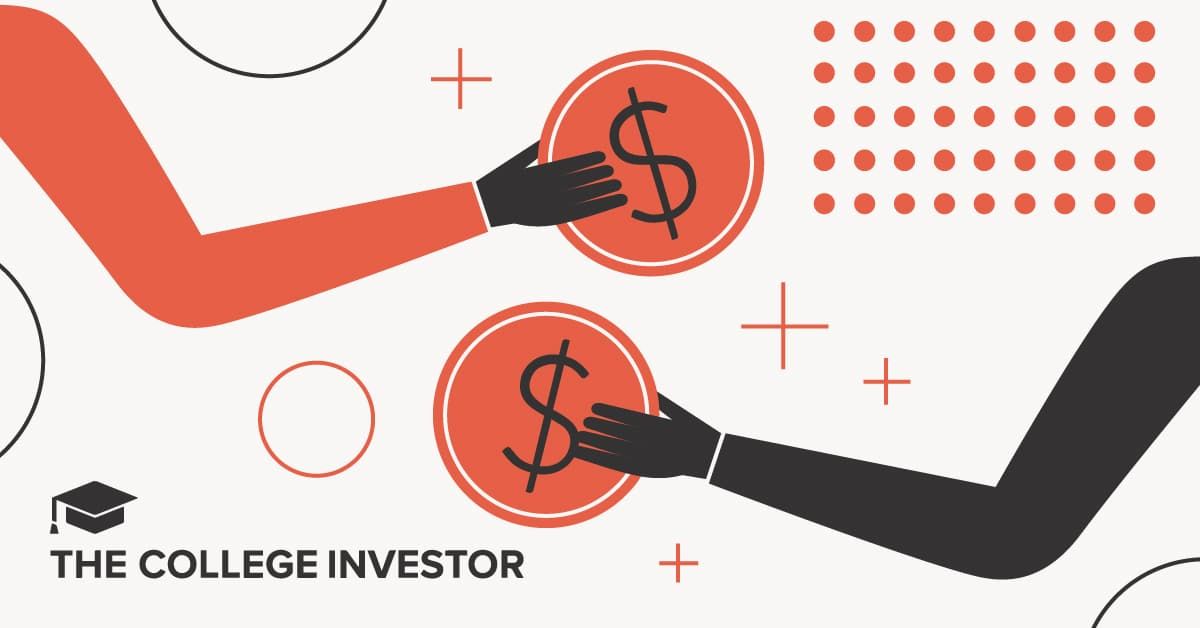
What is a grandparent-owned 529 college savings plan? How do they work? What do you need to know about them and what changes should you know about?
A grandparent-owned 529 plan is a type of 529 college savings plan where the account owner is a grandparent, as opposed to a parent. The grandchild is the beneficiary.
Another alternative would be a custodial 529 plan account, where the grandchild is both the account owner and beneficiary, but the grandparent serves as custodian. There is no limit on the type of 529 plan where grandparents can make contributions. Grandparents can contribute to grandparent-owned 529 plans, custodial 529 plans, and parent-owned 529 plans.
Keep in mind that grandparent-owned 529 plans have a different impact on eligibility for need-based financial aid than parent-owned 529 plans. Here's what you need to know if you're interested in a grandparent-owned 520 plan.
What To Know If You’re An Account Holder
If you’re a grandparent, there are several reasons why you may or may not want to be the account owner. The most important factors of account ownership include tax implications, financial aid, and estate planning.
- You are in control of the funds: By serving as the account owner, as opposed to contributing to a parent-owned 529 plan, the grandparent retains control over the account. This might be necessary to ensure that the money is spent for the grandchild’s benefit if the parents are spendthrift.
- You can tap into the funds if you need it: You can take back the money from a 529 plan account as a non-qualified distribution, if necessary.
- Tax benefits: You may need to be the account owner to claim a state income tax break.
- You don't need a ton of info to open an account: The grandparent can keep the plan a secret from the parents and grandchildren to surprise the family when they announce they’ve saved for the grandchild’s college education. All you need to know is the grandchild’s date of birth and Social Security Number to open the account.
The Impact On Your Taxes
Two-thirds of states offer an income tax deduction or tax credit based on contributions to the state’s 529 plan. In the following 10 states, the taxpayer must be the account owner (or spouse of the account owner) to claim a state income tax break.
529 Plans Provide Significant Estate-Planning Benefits
Contributions to a 529 plan, up to the annual gift tax exclusion, are immediately removed from the contributor’s estate, even if the contributor retains control over the 529 plan as the account owner.
Status of Gifter | How Much You Can Gift Per Year Without Being Taxed |
|---|---|
Single | $18,000 |
Married | $36,000 |
A five-year gift-tax averaging, also known as superfunding, allows contributors to give a lump-sum contribution up to five times the annual gift-tax exclusion and have it treated as occurring over a five-year period.
For example, you can give up to $90,000 (5 x $18,000) per beneficiary or you and your spouse can give up to $180,000 per beneficiary.
A portion of the gift is removed from your estate each year. Giving a lump sum allows the beneficiary to immediately invest the full amount, instead of just a fifth of the amount each year.
See more on 529 plan contribution limits here.
Earnings Accumulate On A Tax-Deferred Basis
Qualified distributions are entirely tax-free. Qualified distributions include amounts spent on college costs, such as:
Qualified distributions may also be used to pay for up to $10,000 per year in elementary and secondary school tuition.
Qualified distributions can also be made to repay up to $10,000 in the beneficiary’s student loans and $10,000 for each of the beneficiary’s siblings. (With a change in beneficiary, the 529 plan can also be used to repay up to $10,000 in parent loans.) The $10,000 limit is a lifetime limit per borrower, regardless of the number of 529 plans.
The earnings portion of a non-qualified distribution is taxable at the recipient’s rate, plus a 10% tax penalty. The recipient may be the beneficiary or the account owner. Here are some commonly asked expenses that are non-qualified distributions:
The tax penalty is waived if the beneficiary has passed away, is disabled or received:
- A tax-free grant or scholarship such as the American Opportunity Tax Credit (AOTC), Lifetime Learning Tax Credit (LLTC)
- Attended a U.S. military academy
- Veterans educational assistance
- Employer-paid educational assistance up to the amount of the education benefit
Generation-Skipping Transfer Taxes
When a grandparent contributes to a 529 plan for a grandchild, they may be subject to Generation-Skipping Transfer Taxes (GST).
GST occurs when the beneficiary is 37.5 years younger than the donor. However, GST does not apply if the grandchild’s parents are both dead. GST is subject to the same exclusions and exemptions as gift taxes. In particular, the $18,000 annual gift tax exclusion and 5-year gift tax averaging applies.
If you want to give more, you will use up part of your lifetime exemption, which was $13.6 million in 2024 ($27.2 million for a couple).
Most people will not have to pay GST or gift taxes. However, if you give more than $18,000 to a beneficiary in a single year, you will need to file a U.S. Gift (and Generation-Skipping Transfer) Tax Return, IRS Form 709.
Impact on Financial Aid
The financial aid impact depends on who owns the account, which affects how the 529 is reported as an asset on the Free Application for Federal Student Aid (FAFSA), and how distributions are reported as income on the FAFSA. See the following table to understand ownership, how it's reported on the FAFSA, and how qualified distributions are counted.
Owner | How It's Reported On FAFSA | Qualified Distributions |
|---|---|---|
Dependent Student | Parent asset | These are ignored |
Dependent Student's Parent | Parent asset | These are ignored |
Independent Student | Student asset | These are ignored |
Anyone Else: Grandparent, Aunt, Uncle, Non-Custodial Parent | Not reported as an asset | These are ignored |
In all cases, the earnings portion of a non-qualified distribution is included in adjusted gross income (AGI) on the recipient’s federal income tax return. Therefore, it’s reported as income on a subsequent year’s FAFSA.
How 529 Plan & Distributions On FAFSA Affects Student’s Eligibility For Need-Based Financial Aid
Parent assets reduce eligibility for need-based financial aid by as much as 5.64%. Student assets reduce eligibility for need-based financial aid by as much as 3.29% if the student has dependents other than a spouse. It is reduced by 20% if the student does not have dependents other than a spouse.
However, starting with the 2024-25 FAFSA (which you fill out in 2023), qualified distributions from a grandparent-owned 529 plan no longer have an impact on eligibility for need-based financial aid. The same applies for a 529 plan owned by anyone else.
This means that grandparent-owned 529 plans will not be reported as an asset and qualified distributions will not be reported as income on the FAFSA. (Non-qualified distributions will continue to be included in income.) FAFSA Simplification eliminates the cash support question, which is where untaxed income to the student was previously reported.
Examples
For example, if there is $10,000 in a 529 plan owned by a dependent student or the dependent student’s parent, it will reduce the student’s aid eligibility by up to $564.
If the 529 plan is owned by an independent student, it reduces aid eligibility by up to $2,000.
If the 529 plan is owned by a grandparent, there will be no reduction in aid eligibility.
Want to learn more about 529 plans? Check out our ultimate guide.
More information about 529 plans can be found in IRS Publication 970.
The statutory language concerning the tax treatment of 529 plans can be found in the Internal Revenue Code of 1986 at 26 USC 529.
The statutory language concerning the financial aid treatment of 529 plans can be found in the Higher Education Act of 1965 at 20 USC 1087vv(a)(B)(2) and (f)(3).

Mark Kantrowitz is an expert on student financial aid, scholarships, 529 plans, and student loans. He has been quoted in more than 10,000 newspaper and magazine articles about college admissions and financial aid. Mark has written for the New York Times, Wall Street Journal, Washington Post, Reuters, USA Today, MarketWatch, Money Magazine, Forbes, Newsweek, and Time. You can find his work on Student Aid Policy here.
Mark is the author of five bestselling books about scholarships and financial aid and holds seven patents. Mark serves on the editorial board of the Journal of Student Financial Aid, the editorial advisory board of Bottom Line/Personal, and is a member of the board of trustees of the Center for Excellence in Education. He previously served as a member of the board of directors of the National Scholarship Providers Association. Mark has two Bachelor’s degrees in mathematics and philosophy from the Massachusetts Institute of Technology (MIT) and a Master’s degree in computer science from Carnegie Mellon University (CMU).
Editor: Claire Tak Reviewed by: Robert Farrington